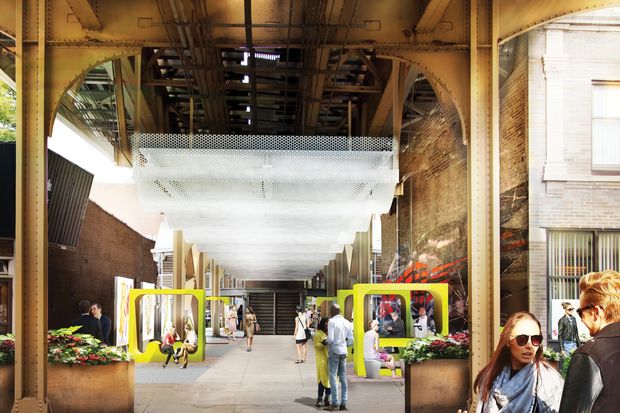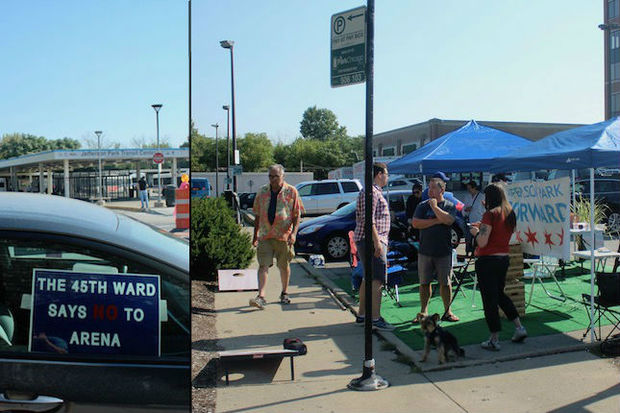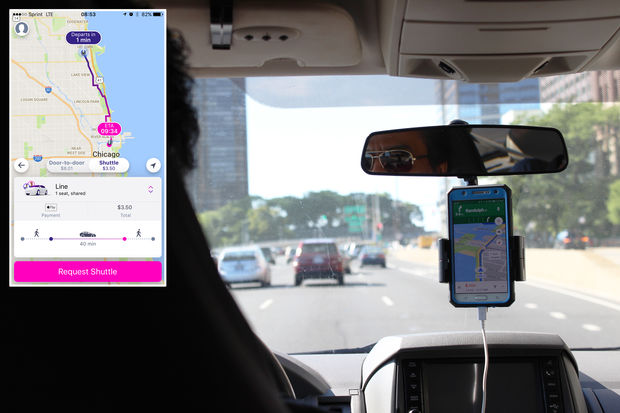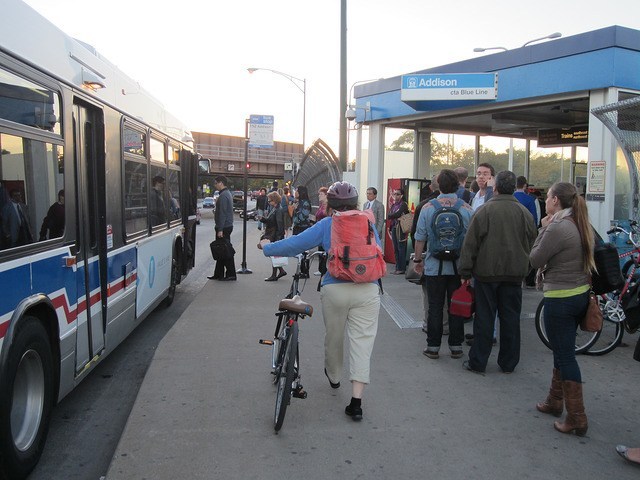Safety, creative lighting and noise were the hot topics at Tuesday’s Low-Line Project meeting.
Initial concepts for the under-the-“L” project at the Paulina and Ashland plazas were revealed in a presentation led by Andrew Moddrell from PORT Urbanism, the design firm working on the project, at a community meeting on Tuesday. Representatives from the Lakeview Chamber of Commerce and CTA were present, along with about 40 community members.
The Low-Line project envisions a continuous half-mile walkway beneath the Brown Line that would connect Southport Avenue and Paulina Street. The project was introduced in the 2011 Lakeview Area Master Plan as a means of connecting the neighborhood’s subdistricts and beautifying the neighborhood.
The design concepts are based on feedback gathered at a community meeting on March 28 and through online surveys since then. Much of the feedback was focused on safety and lighting concerns, as well as requests for public art.
Conversations with CTA representatives about the physical possibilities and constraints of these areas of the Brown Line also played an important role in informing the designs.
The concepts revealed for Paulina are reminiscent of Southport, as both serve as entrances to the Low-Line, and both are spots along the pathway where trains will come to a stop, making them less noisy than areas where the trains are driving straight through, like Ashland.

Some of the proposed features of the Paulina Plaza include overhead lighting, playful covered seating structures, finer gravel on the ground, spaces for food vendors and the same art panels that will go into Southport.
“We were trying to think of ways to create a space where you would hang around for just a minute but not all day, and not a space to host a lot of people or large events, but a place that could incorporate vendors and art,” Moddrell said. “We didn’t want to act like this was a space that was going to host long-term events or gatherings. But it can be a fun space you move through.”
The Ashland Plaza has a much simpler design for a few reasons: First, since trains run straight through that spot, the plaza would be an unlikely place for someone to spend much time lingering. Second, there are more constraints from the CTA: There is no access to power for lighting, nothing can be attached to the CTA structure, the structure itself will undergo construction to add concrete footing at some point over the next few years, and maintenance vehicles regularly use this pathway.
A rendering of the Ashland Plaza design concept revealed during Tuesday’s community meeting [Provided/PORT Urbanism]
Because of these factors, the Ashland Plaza concepts showed finer gravel on the ground, more art panels and interactive, programmable lighting columns that could also double as a public art piece. Finding a power source for these lights is still on the to-do list, Moddrell said.
After the presentation, community members asked questions and made comments on what they saw. One of the biggest concerns of the night was noise and whether the project makes sense given how unpleasant it is to be beneath train tracks.
But Moddrell pointed out the success of the Low-Line Market, which takes place at the Southport stop, as well as the frequency with which people already walk below CTA tracks throughout the city and including this stretch of the Brown Line. About 300 people filled out a survey on the Low-Line Project, and only 30 said they would not use the pathway even if it were completed, Moddrell said.
“Sound is just something we have to try to find a way to embrace with this because there’s very little we can do,” Moddrell said.
Another concern was the lack of crosswalks along the proposed pathway from Southport to Paulina. Moddrell said the only safe way to use the Low-Line would be to deviate from it to use a crosswalk when crossing streets. Some argued that it will be less likely to be used if it’s not a true, unbroken pathway, and Moddrell said lobbying for crosswalks in the future when the project is completed would fall to the community members.
Others voiced support for the project, saying it will make the affected areas safer and more pleasant to be around.
“Ultimately from the feedback from the CTA and the community, we are proposing that the Lakeview Low-Line could become both a fun and dynamic path for connecting Lakeview, but also a unique art destination in Chicago — something that brings people over from Wrigley Field or someone getting off the Brown Line to take a walk, but also something that draws out-of-towners,” Moddrell said. “It becomes both a really well-used daily path as well as a unique destination.”
Phase I of the plan has already seen improvements at Southport, including finer gravel on the ground, planters and tables and chairs, all of which are meant to make the plaza, which hosts the popular Low-Line Market, easier on the eyes.
The Paulina and Ashland plazas are also part of Phase I, and like Southport, they will be funded by Special Service Area 27, which receives tax money to perform basic services not provided by the city, including landscaping, holiday decorations and placemaking initiatives that would include the Low-Line. Phase I construction will take place next year.
Phase II of the project will see the development of the pathway connecting Paulina and Ashland, and Phase III will consist of the pathway connecting Ashland and Southport. Phases II and III will be funded by the non-profit Friends of Lakeview, which will solicit individual and corporate donations to see the project completed. There is currently no set timeline for Phases II and III.







